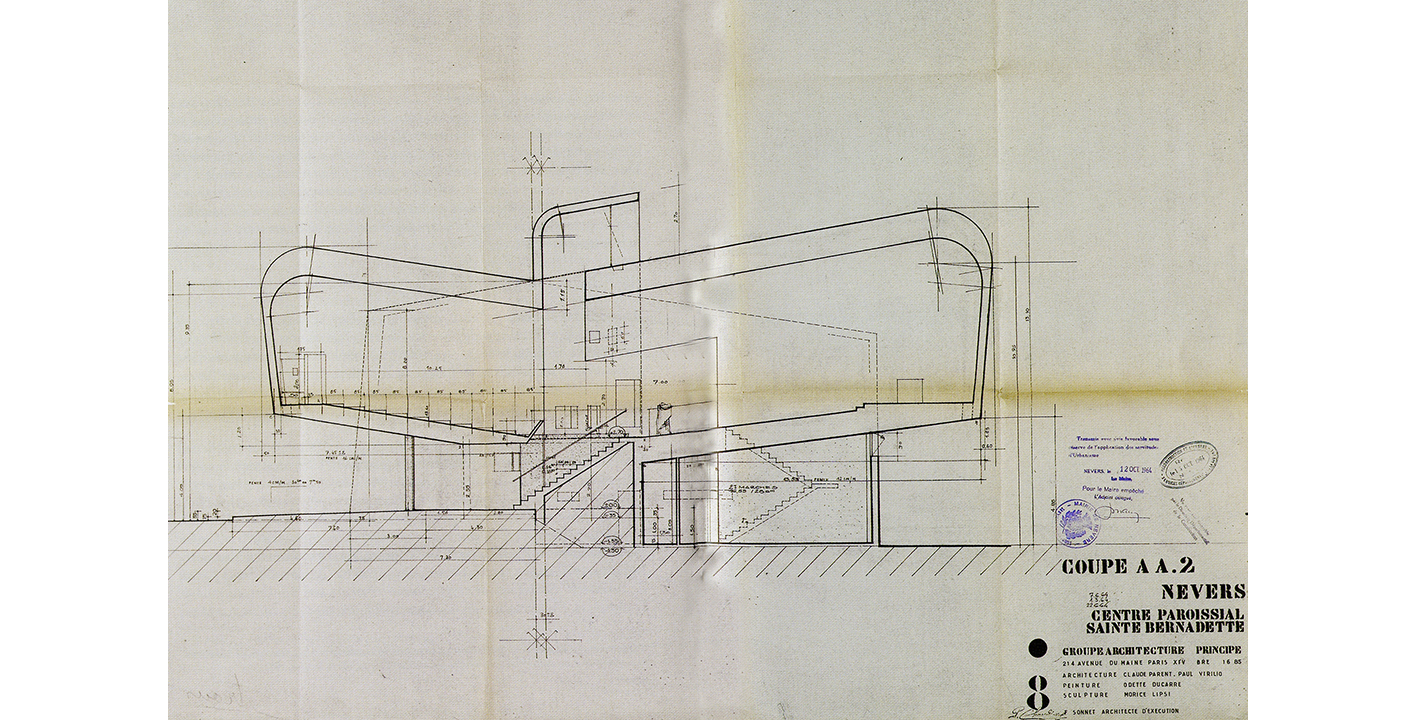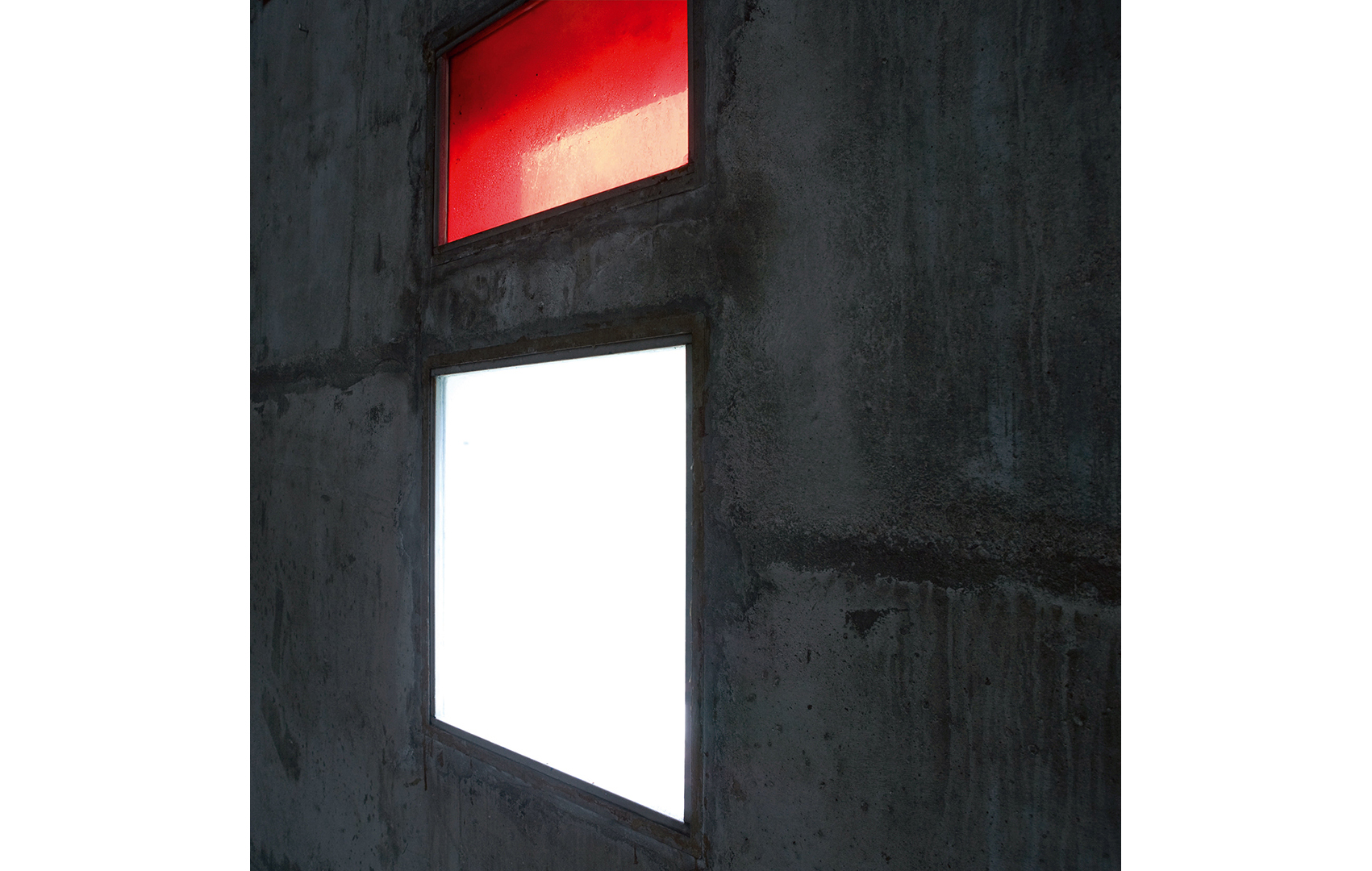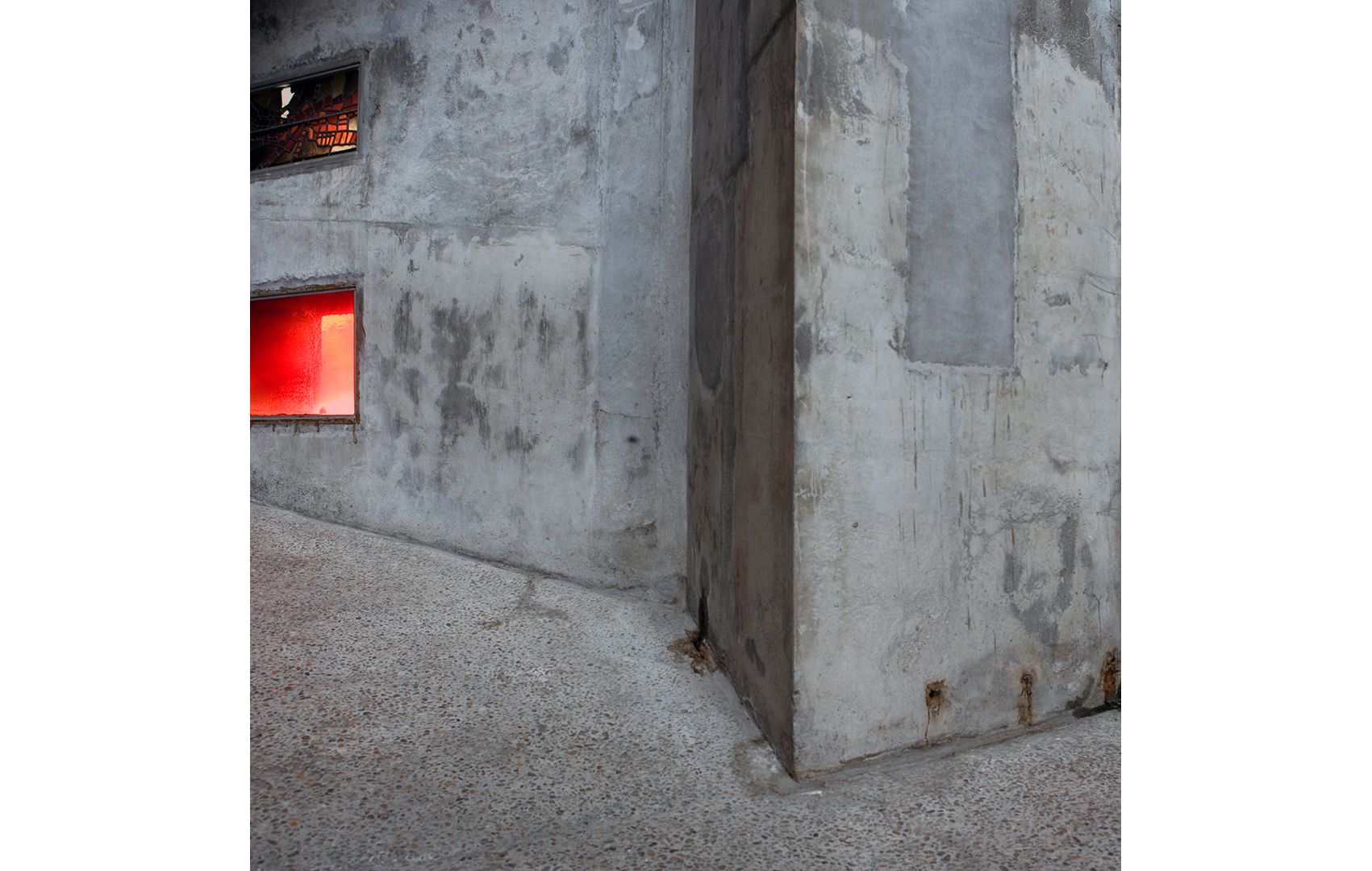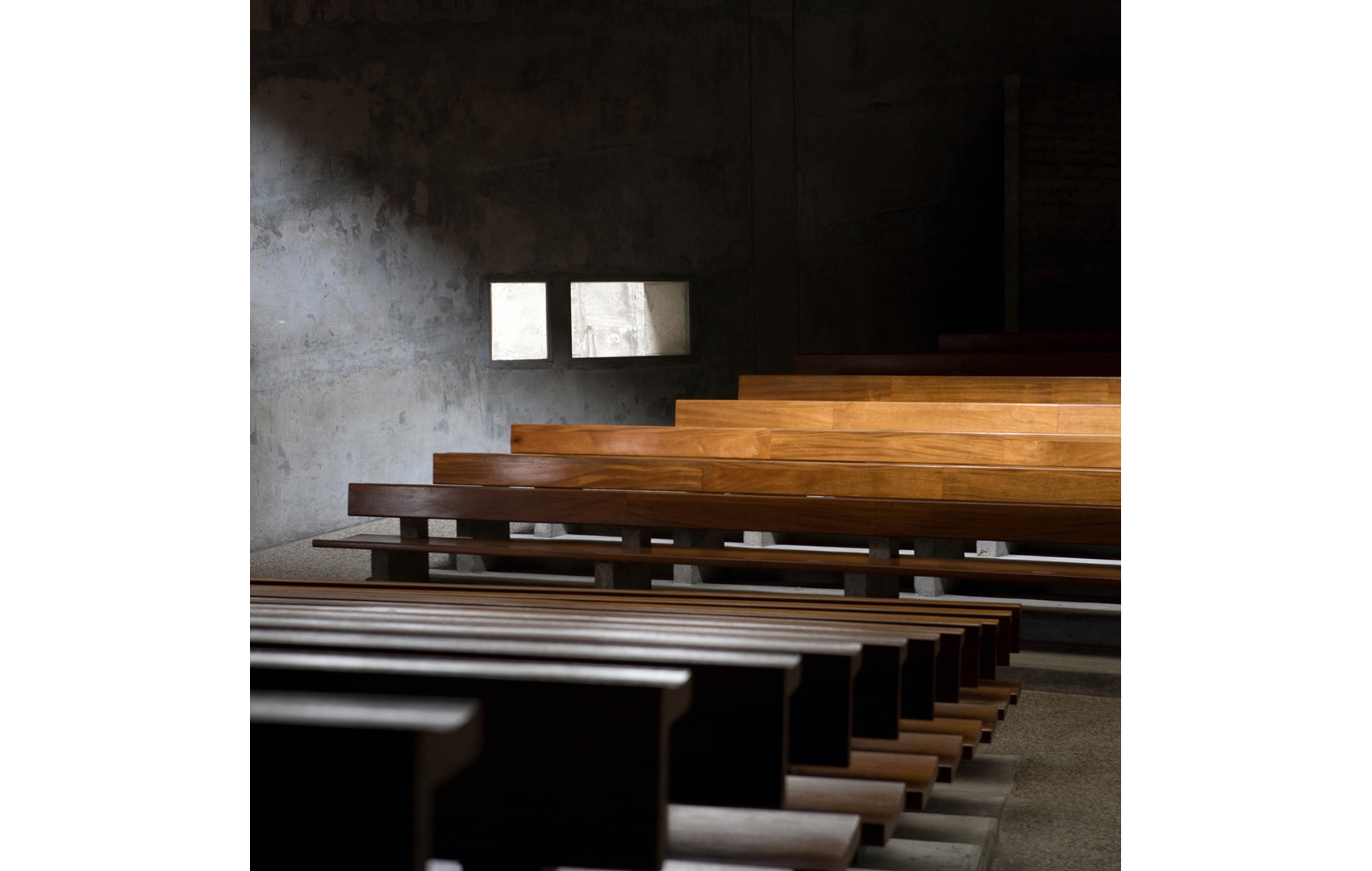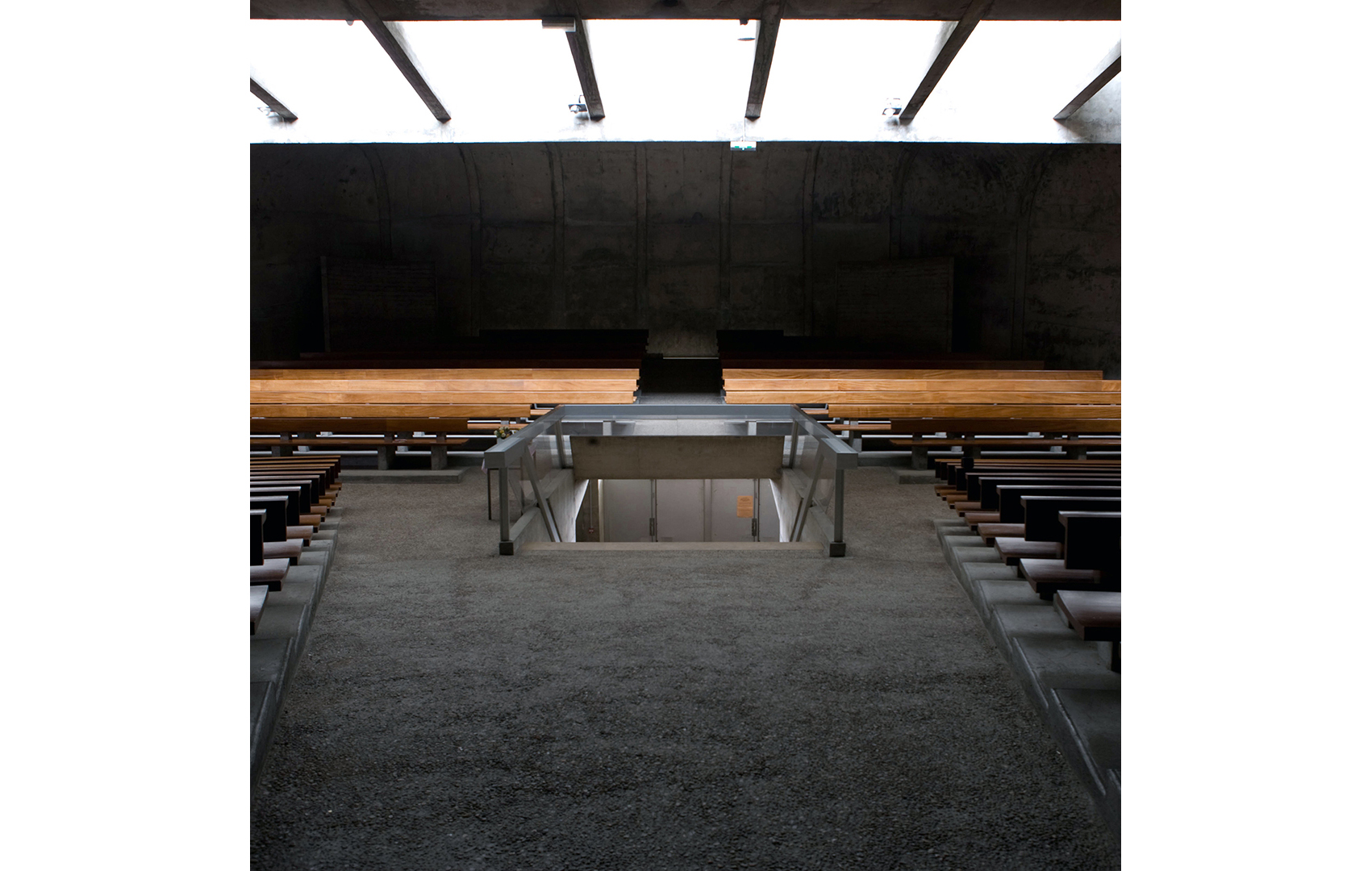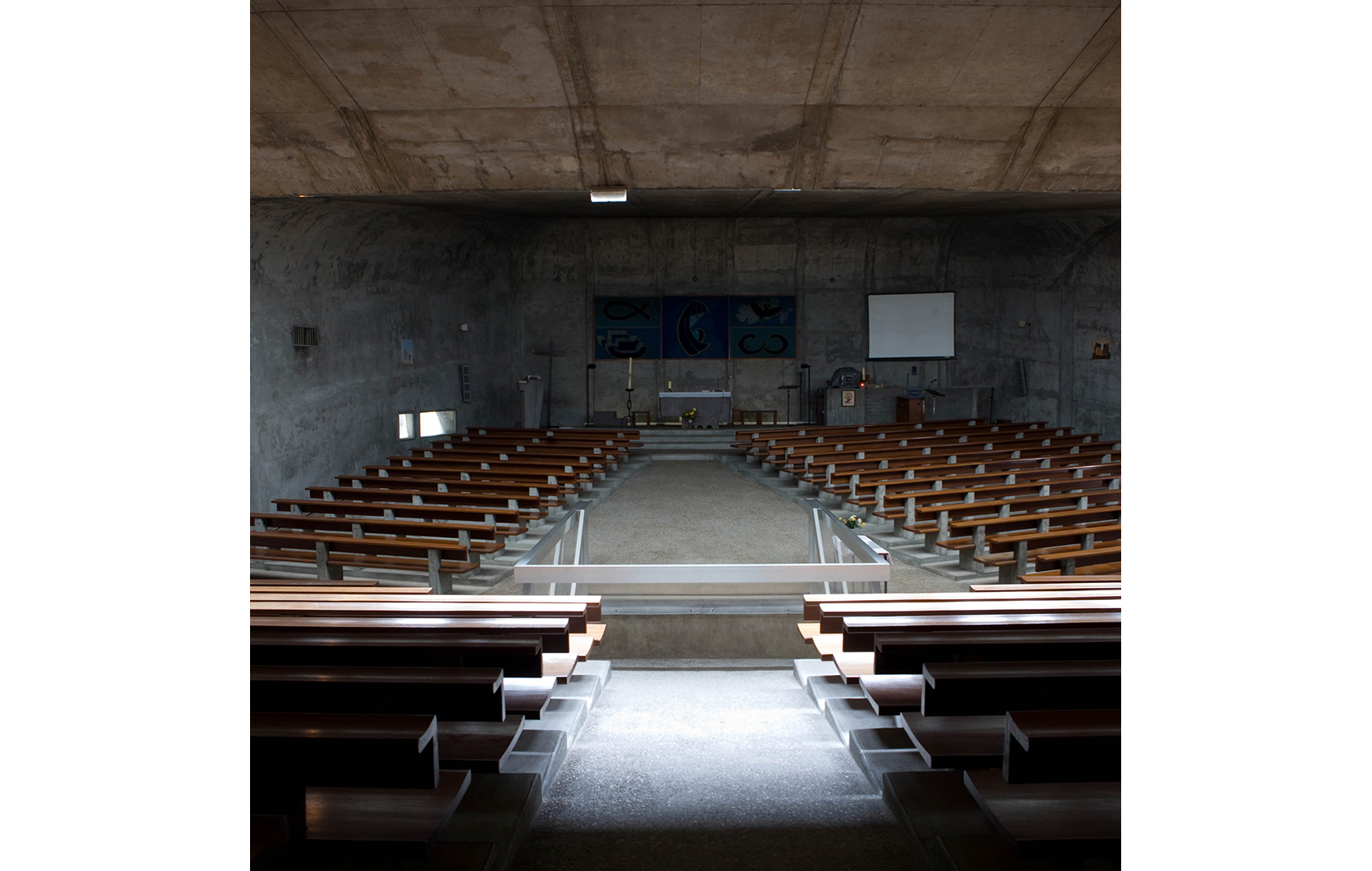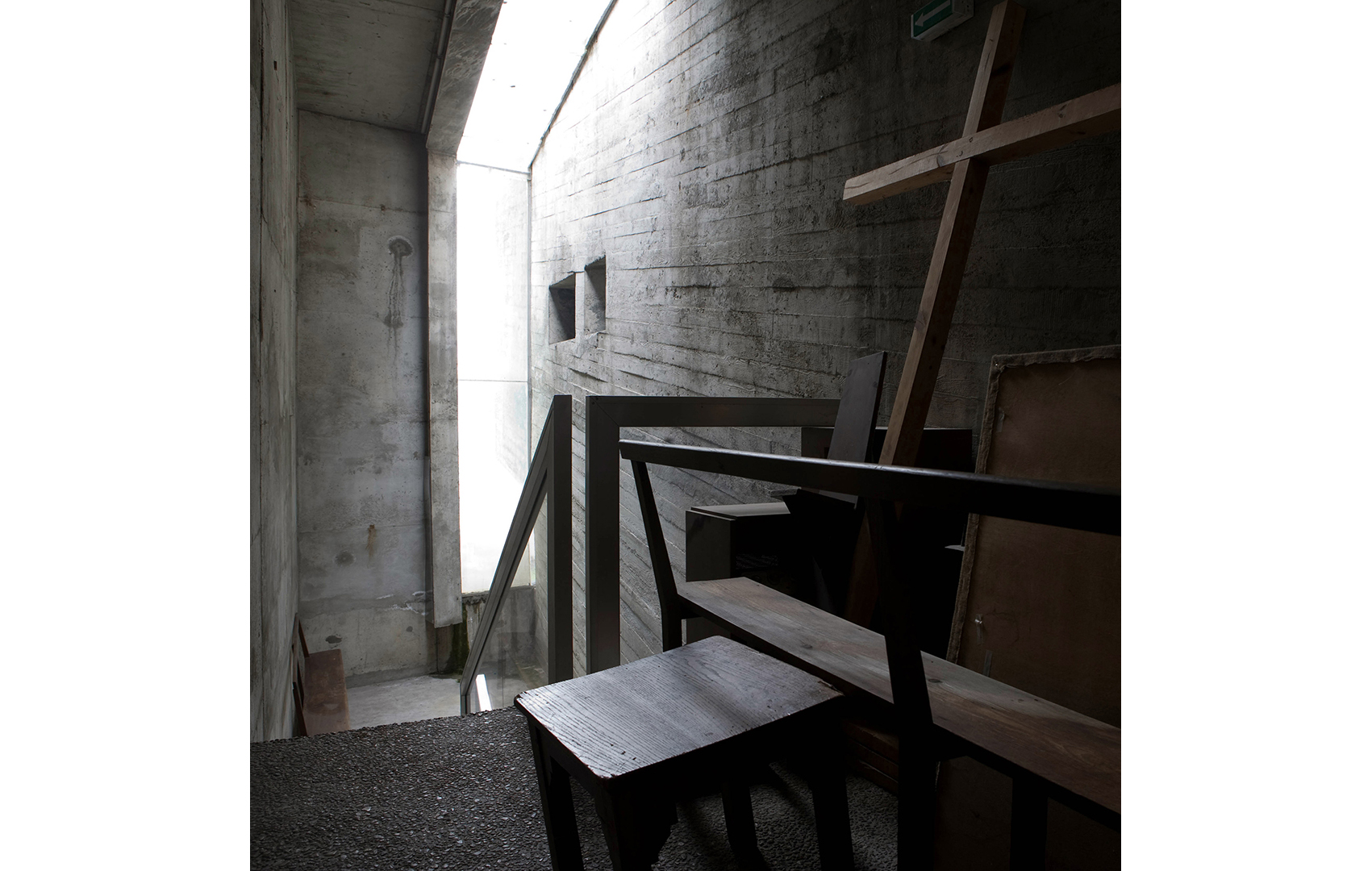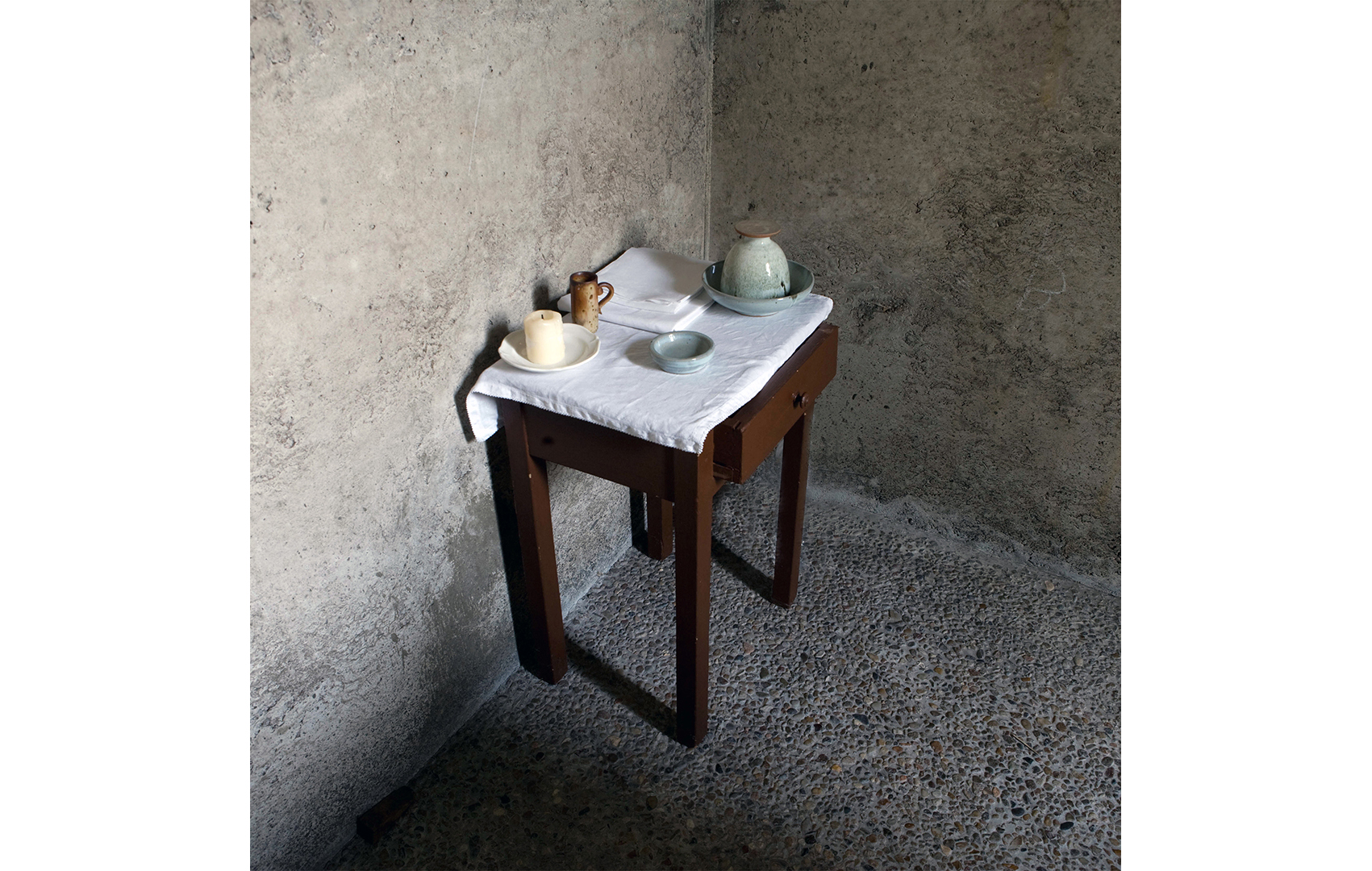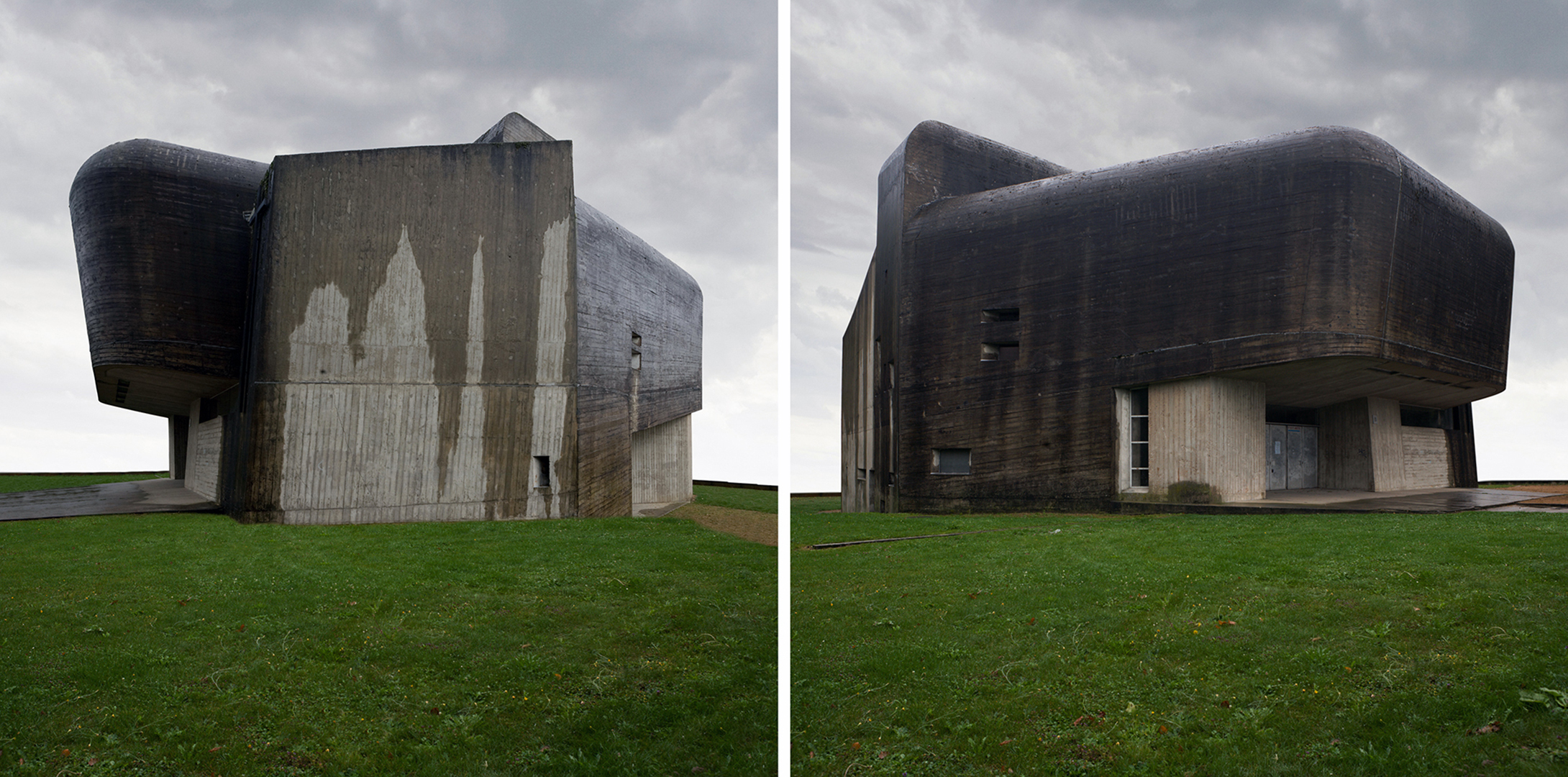Guerre froide / 2009
Série de 15 photographies, tailles variables
En 1966 à Nevers, l’église Sainte-Bernadette-du-Banlay voit le jour, fruit de la collaboration de Claude Parent, architecte et de Paul Virilio, urbaniste et essayiste. Référence au bunker comme l’abri protecteur, l’église est un édifice témoin d’un siècle qui a accumulé les drames, les guerres tragiques ; le bunker figure le souvenir de ses atrocités. Nous sommes en pleine guerre froide et les bunkers sont surtout l’abri atomique dont certains pays entreprennent la construction. C’est la menace de la guerre atomique qui plane. Claude Parent dit : « Lorsque Paul Virilio et moi avons conçu l’église Sainte-Bernadette, nous connaissions de façon inconsciente son caractère perturbateur mais nous étions loin d’imaginer la violence qu’engendrerait cet édifice ». Elle fût menacée pendant des années de destruction.
Serie of 15 photographs, variable sizes
In 1966, the Sainte-Bernadette-du-Banlay church was built in Nevers, the result of a collaboration between Claude Parent, an architect, and Paul Virilio, an urban planner and essayist. Referring to the bunker as a protective shelter, the church is a building that bears witness to a century that has accumulated tragedies and tragic wars; the bunker represents the memory of its atrocities. We are in the midst of the Cold War, and bunkers are primarily the atomic shelters that some countries are undertaking to build. The threat of atomic war looms large. Claude Parent says: "When Paul Virilio and I designed the church, we were unconsciously aware of its disruptive nature, but we were far from imagining the violence that this building would engender." It was threatened with destruction for years.
